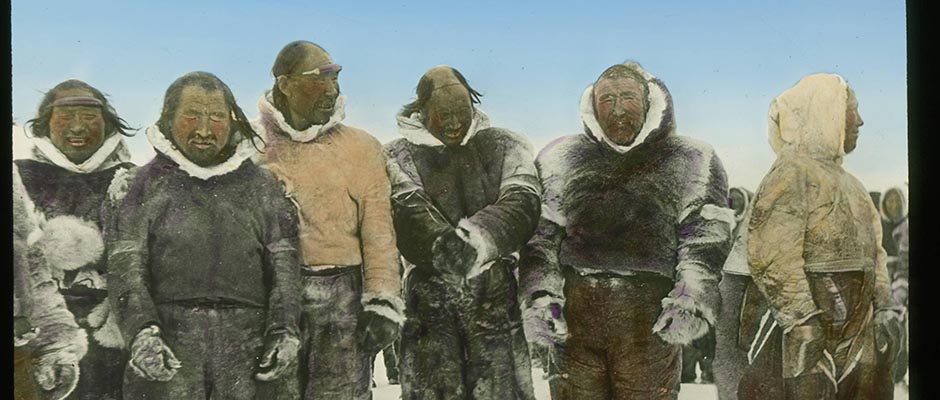-
John Cleves Symmes
Encyclopedia Arctica 15: Biographies
001 | Vol_XV-0819
EA-Biography
(Leila F. Clark)
JOHN CLEVES SYMMES
John Cleves Symmes (1780 - 1829), soldier and "hollow earth" theorist,
was born in Sussex County, New Jersey, November 5, 1780, the son of Timothy
and Mercy (Harker) Symmes. He was a descendant of Zechariah Symmes who
emigrated from England to Charlestown, Mass., in 1634. His father was Judge
of the Court of Common Pleas of Sussex County, and the only brother of the
John Cleves Symmes (1742-1814) whose name is famous in the history of the
Middle West for his connection with the "Symmes Purchase" and the founding
of the city of Cincinnati. Like his brother, Timothy Symmes was said to
have taken "an active part in the cause of liberty in the Revolutionary war."Except that he received "a good common English education" and showed a
keen interest in science and mathematics, little is known of Symme's education.
His insatiable intellectual curiosity undoubtedly added greatly to whatever
body of knowledge he acquired from his formal schooling.Through his uncle's influence Symmes entered the United States Army as
an ensign, March 26, 1802, and he rose ultimately to the rank of captain in
1813. For several years he was stationed at different posts in the Southwest;
at Fort Adams near Natchez, in New Orleans, and at other points. It was while
at Fort Adams that he fought a duel with a brother officer, Lieutenant Marshall,
who had made some slighting remarks, entirely unfounded, about Symmes's financial
integrity. Both were wounded in the encounter, Marshall in the thigh, and Symmes
002 | Vol_XV-0820
EA-Biog. Clark: John Cleves Symmes
in the left wrist, the use of which he never fully recovered.In 1808, while he was stationed at Fort Adams, Symmes married Mrs. Mary
Anne (Pelletier) Lockwood, widow of Captain Benjamin Lockwood, and mother
of six children. Mrs. Symmes was a warmhearted, vivacious, intelligent
woman of French descent. She spoke no English until after her second marriage.
Symmes himself learned French, and is said to have spoken both French and
Spanish fluently. He was devoted to his wife, and looked after the interests
of his stepchildren equally with those of his own four.Symmes was stationed in Missouri at the outbreak of the war of 1812 and
later was ordered to join the army of General Brown on the northern frontier,
where he commanded his company with skill and gallantry. He was given honorable
mention for his bravery at the battle of Lundy's Lane, and in the successful
sortie from Fort Erie he and his command captured one of the batteries, Symmes
leading his men over the intrenchments and spiking the first cannon with his
own hand.Captain Symmes received his honorable discharge from military service
June 15, 1815, and settled in St. Louis where he engaged in the business of
furnishing supplies to the troops stationed on the upper Mississippi, and
traded with the Fox Indians under a special license received from Governor
Clark of Missouri Territory.It was from St. Louis that Symmes made the first startling announcement
of his hollow earth theory in a circular dated April 10, 1818, declaring the
earth to be hollow, habitable within, containing a number of concentric
spheres, and open at the pole, twelve or sixteen degrees. He declared himself
ready to explore the hollow, and asked the world to support and aid him in the
undertaking. "My terms are the patronage of this and the new world, I dedicate
to my wife and her ten children."
003 | Vol_XV-0821
EA-Biog. Clark: John Cleves Symmes
The circular was widely distributed and the theory was received at
first with almost universal derision. Undiscouraged, Symmes spent all the
rest of his life, until illness overcame him, writing and lecturing about
it, and tryint to obtain support for an exploring expedition to prove its
truth and to open the new inner world which he expected to find. Later it
gained a good many warm adherents, Symmes's own great simplicity of manner
and the absence of any evidence of mental unbalance winning him many friends.Symmes moved from St. Louis to Newport, Kentucky, in 1819, and in 1824
to Hamilton, Ohio. In 1822 and 1823, petitions for financial aid and ships
received little serious consideration from Congress and were laid on the table.
In 1825, Symmes was given permission to join a Russian exploring expedition
but was not financially able to take advantage of it.Symmes was first introduced to a large audience in Cincinnati in 1824,
and in 1825, accompanied by his stepson, Anthony Lo [c ?] kwood, and by Jeremiah
N. Reynolds, one of his most earnest and influential converts, started on a
prolonged lecture tour through Ohio and the East. In Philadelphia, Reynolds
left him to lecture separately, and he and his stepson continued on through
New England, New York, and as far north as Quebec. Local newspapers everywhere
were full of notices of the lectures, both favorable and unfavorable. Many
of them were skeptical of the truth of the theory but favorable to an arctic
expedition whatever the outcome so far as the incidental testing of the theory
might be.Symmes's health, never very good, suffered from the severe climate in
Canada, and he went back to New York in 1827. He spent some time with relatives
in New Jersey but seldom lectured after 1827. Seriously ill, he returned to
Ohio, and died in Hamilton, May 28 or 29, 1829.
004 | Vol_XV-0822
EA-Biog. Clark: John Cleves Symmes
Though Symmes himself was unsuccessful, the enthusiasm and dogged
persistence with which he and his converts, notably Reynolds, championed
this theory and campaigned for its testing undoubtedly influenced public
support of an exploring expedition, and so, by devious ways, played a
part in the ultimate launching of the first great U.S. Exploring Expedition,
in 1838, under Captain Wilkes, U.S.N., not to the Arctic, it is true, but to
the Antarctic.Leila F. Clark

